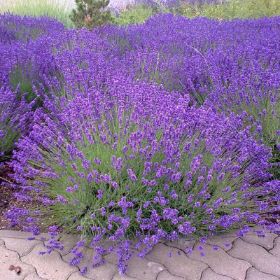Patchouli Certified Organic
Description
About Patchouli Plants
Grow your own Patchouli plants for its many fragrant uses! Despite its scientific name, Pogostemon cablin, this perennial herb is commonly referred to by a variety of names, including stink weed, pucha pot, and putcha-pat. Patchouli’s distinctive fragrance has made it a highly valued herb among enthusiasts for its versatility in applications ranging from aromatherapy and perfume to repellents.
How to Grow Patchouli
Patchouli needs plenty of sunlight to grow well. Choose a location that gets at least 6 hours of direct sunlight each day. It is a warm-weather herb that is frost sensitive. Although this herb doesn’t produce showy flowers, its full, shrub-like qualities add contrast and fill up space in beds and borders.
A perennial herb in warmer climates, patchouli does prefer to grow in partial shade and although it needs frequent watering, it is a resilient plant and can recover quickly even after a prolonged period of drought or wilting.
You can start harvesting patchouli leaves as soon as the plant is established. Cut the leaves off at the stem, and new growth will emerge. Regular harvesting will keep the plant producing fresh leaves for fragrance.
If you’re looking to add a unique and fragrant herb to your garden, consider growing patchouli.Our USDA-Certified Organic herbs come potted in quality soil and ready to plant!
Survival Guaranteed!


Since 1816, Stark Bro’s has promised to provide customers with the very best fruit trees and plants. It’s just that simple. If your trees or plants do not survive, please let us know within one year of delivery. We will send you a free one-time replacement, with a nominal shipping fee of $9.99. If the item in question is not available, we can issue a one-time credit to your account equaling the original product purchase price or issue you a refund. Read more about our warranty policy.
Characteristics
| Bloom Color | Pink, White |
| Hardiness Zone Range | 2 - 11, Outdoor Planting: 9 - 11 |
| Pollination | Not Required |
| Shade/Sun | Partial Shade - Full Sun |
| Soil Composition | Loamy |
| Soil Moisture | Well Drained |
| Soil pH Level | 5.5 - 7.0 |
| Years to Bear | 1 |
Size & Spacing
Mature Size
Recommended Spacing
Zone Compatibility
Pollination
Pollination is not required for this variety.
Tools & Supplies
Planting & Care
Learn all about how to grow herbs in The Growing Guide. An entire section of our website dedicated to your growing success.
Shipping Information
Estimated Delivery Date
Arrives when it's time to plant
Questions & Answers
Customer Reviews
Here are more items we think you'll love!

 This item is USDA certifield organic
Alpha Certified Organic Calendula
$18.99
This item is USDA certifield organic
Alpha Certified Organic Calendula
$18.99

 This item is USDA certifield organic
German Certified Organic Chamomile
$18.99
This item is USDA certifield organic
German Certified Organic Chamomile
$18.99
 Barbeque Certified Organic Rosemary
$23.99
Barbeque Certified Organic Rosemary
$23.99

 This item is USDA certifield organic
English Certified Organic Thyme
$18.99
This item is USDA certifield organic
English Certified Organic Thyme
$18.99
 On Sale
Strawberry Certified Organic Mint
$13.99
On Sale
Strawberry Certified Organic Mint
$13.99
 Munstead Certified Organic Lavender
$19.99
Munstead Certified Organic Lavender
$19.99












